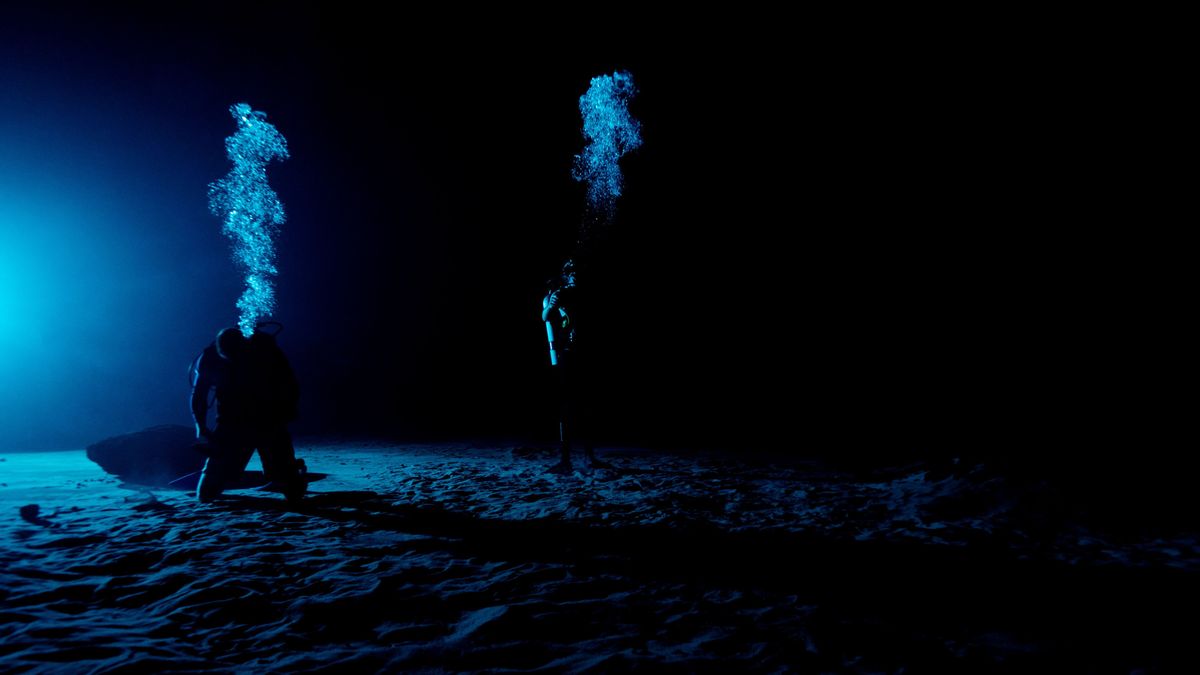JAKARTA - The National Aeronautics and Space Administration (NASA) recently released a rather frightening image, in which astronauts were seen in a dark room with lots of rocks.
But actually, these astronauts are doing some unique training for the mission to the Moon. The image, according to reports, was taken from inside a giant pool of water at NASA's Neutral Buoyancy Laboratory (NBL) at Johnson Space Center in Houston, Texas, USA.
In the murky light, two figures on the surface resembled the Moon. The NBL includes a water-filled pool 62 meters (202 feet) long, 31 meters (102 feet) wide and 12 meters (40 feet) deep that can hold up to 6.2 million gallons of water.
This pool of water is designed to mimic the conditions astronauts will experience during the first crewed mission to the Moon's south pole as part of the upcoming Artemis mission.
Using pools of water, this method can help astronauts feel the gravitational conditions on the Moon, while the unique lighting replicates the dim conditions at the south pole as the sun's rays appear only a few degrees above the horizon.
“Turn off the lights, we're simulating a moonwalk! Divers at NASA's Neutral Buoyancy Laboratory turned off the lights to simulate what astronaut Artemis might experience at the Moon's south pole, long, dark shadows," tweeted @NASA_Johnson.
Kill the lights – we’re simulating a Moonwalk!
Divers at NASA’s Neutral Buoyancy Laboratory turned off the lights to simulate what an Artemis astronaut might experience at the lunar south pole - long, dark shadows. pic.twitter.com/naslhzzix7
— NASA's Johnson Space Center (@NASA_Johnson) February 2, 2022
In addition to citing Digital Trends, Tuesday, February 8, to truly resemble the Moon, NASA installed black curtains on the pool walls to minimize reflections, and used powerful underwater cinematic lights. This is to get the conditions right before the upcoming training for astronauts.
While familiarizing themselves with the unique lighting conditions in the 12-meter-deep pool, the astronauts will perform tasks such as collecting samples of lunar regolith using different tools, inspecting the lunar lander, and, of course, planting the American flag.
VOIR éGALEMENT:
For your information, NASA is very interested in the Moon's south pole because it contains water ice, a resource that is expected to play an important role in future crewed missions exploring outer space.
"We know the south polar region contains ice and may be rich in other resources based on our observations from orbit, but, otherwise, this is a completely unexplored world," said Steven Clarke of NASA.
NASA is also known to aim to put the first woman and first person of color to the surface of the Moon on the Artemis III mission, currently scheduled for 2025.
Before that happens, the unmanned Artemis I mission, launched this year, will fly around the Moon to test the hardware, Artemis II will also take the same route with a crew on board.
The English, Chinese, Japanese, Arabic, and French versions are automatically generated by the AI. So there may still be inaccuracies in translating, please always see Indonesian as our main language. (system supported by DigitalSiber.id)













